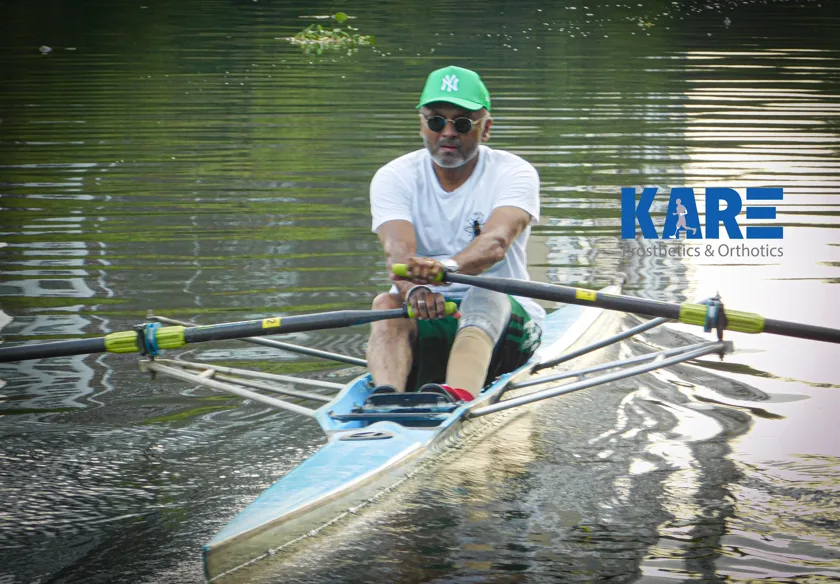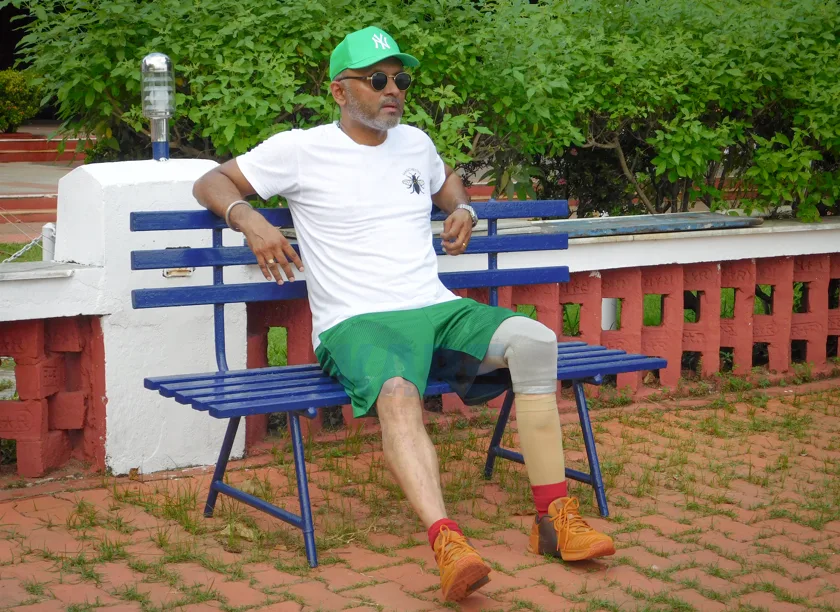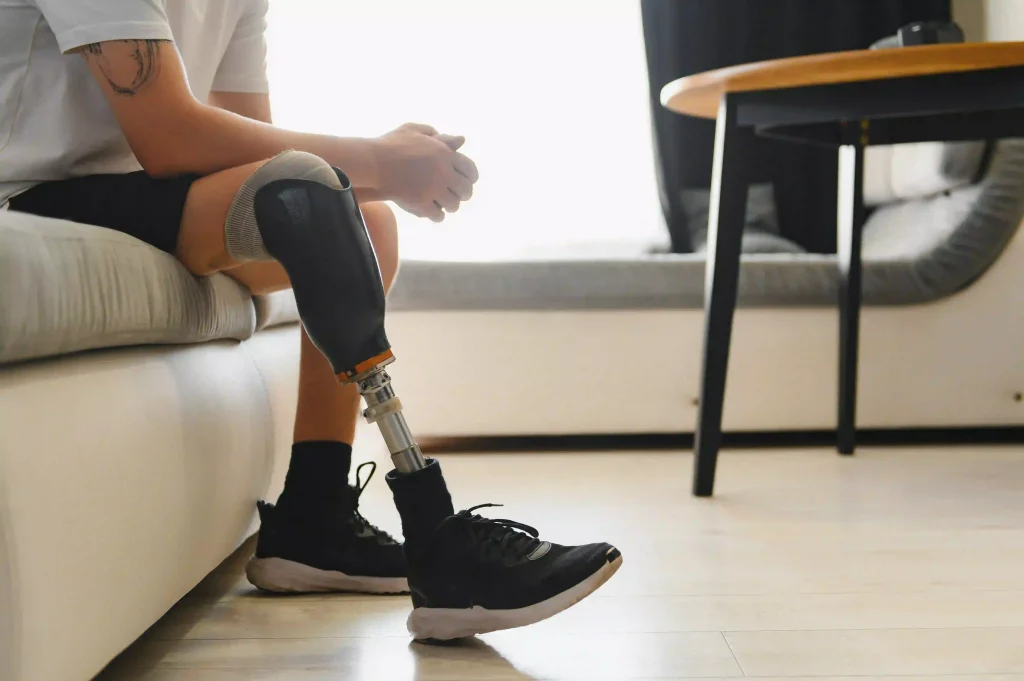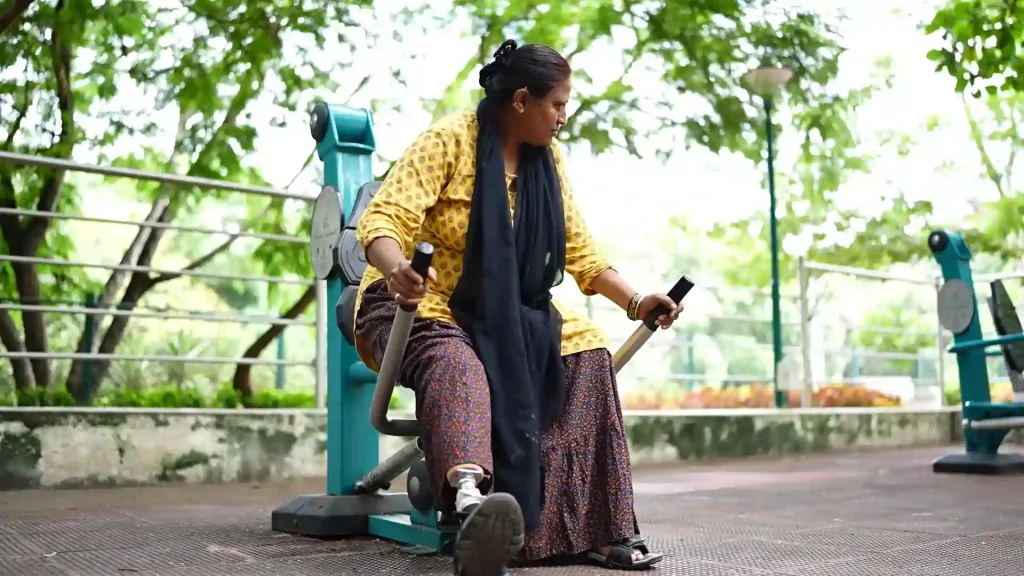Walking with a below-knee artificial leg starts with healing after surgery, followed by strengthening your limb, getting the right prosthetic fit, and learning to walk again through guided therapy. A well-made prosthesis helps you stand, walk, and move with confidence. It takes time, patience, and regular practice to regain balance and mobility. In India, the cost of a below-knee artificial leg can range from ₹12,000 to over ₹10 lakhs, depending on the type and features. With the right support and training, many people return to daily life and regain their independence.

Losing a leg can be challenging and emotionally draining. However, the artificial leg below the knee available today brings hope to amputees. You might wonder how to walk with an artificial leg. With these highly sophisticated prosthetic legs, getting back to life has become easier. An below knee prosthetic leg is an innovative device that replaces the leg below the knee. Its primary goals are to help you walk, move easily, and feel more independent.
In this guide, we will explore everything you need to know about artificial legs below the knee, including how to walk with them, cost of an artificial leg below the knee in India, and more.
What is Below Knee Amputation
A below-knee amputation (BKA) is essentially a surgery to amputate or remove your foot, ankle, and part of your lower leg bone, keeping your knee joint.
Why Is Below Knee Amputation Performed
- Diabetes: When rising blood sugar problems damage blood vessels and nerves, it often leads to foot ulcers.
- Serious Injuries (Trauma): Major accidents can cause severe damage to the leg that may not heal.
- Poor Circulation (Vascular Disease): When blood flow to the leg is minimal.
Keeping your knee joint intact allows you to use a prosthetic (artificial) leg much more easily, have more control over the prosthetic and use less energy.
What Is an Artificial Leg Below the Knee
An artificial leg below the knee, also known as a transtibial prosthesis, is designed to replicate the function and appearance of a natural leg. It allows individuals to walk, stand, and engage in daily activities.
It is an excellent artificial replacement for the missing part of your leg due to a congenital disability or an amputation. The customisable artificial leg below the knee steps in and helps you regain your ability to walk, stand, and move confidently.
Key Components of a Below Knee Prosthetic Leg
- Socket: This is the most crucial part. The socket is a custom-made cup that fits comfortably over your remaining leg. A snug fit is essential to control the leg and ensure a comfortable feel while wearing it.
- Suspension System: This keeps the artificial leg securely attached to the body.
- Pylon (Shank): This is a lightweight tube that acts as a connector, linking the socket to the foot, which is made of carbon fibre,aluminium, stainless steel & titanium lightweight yet strong materials.
- Prosthetic Foot: It is an engineered foot that imitates the natural foot. It helps with Movement, Shock Absorption and energy return
How to Adapt to Your Artificial Leg Below the Knee
1. After Surgery
- Healing: In this stage, the focus is on ensuring your wound heals well and preventing infection.
- Managing Swelling: You will be wearing compressive bandages to reduce swelling and shape your residual limb.
2. Limb Conditioning
- Conditioning the Limb: Exercises strengthen your remaining limb and the surrounding muscles.
- Knee Mobility: To achieve comfortable walking later, you must be consistent in moving the knee joint freely.
3. Prosthetic Fitting
- Custom Mould: Your prosthetist creates an accurate mold of your residual limb.
- Test & Final Fit: You receive “test sockets” to ensure a perfect fit and comfort. Later, you get the final, custom-made artificial leg.
4. Learning to Walk (Gait Training)
- Essential Steps: With the help of a physical therapist, you learn how to balance, shift your weight, and walk.
- Daily Life Skills: Walking on various surfaces and situations is essential.
5. Emotional Adjustment
- It’s okay to feel overwhelmed. Joining a support group or speaking to someone who’s gone through a similar journey can be very helpful.
Proven Tips for Learning To Walk with An Artificial Leg Below Knee

Learning to walk with a below-knee prosthetic leg is a highly challenging yet achievable task. To master the right walking skills, you have to be patient and have the right approach; here are some key tips:
1. Proper Fit and Maintenance
- Perfect Fit is Crucial: With the guidance of your prosthetic team, ensure the “socket” offers maximum comfort and control, the key to effective movement.
- Regular Cleaning: Learn to keep the socket area clean to prevent skin problems and maintain hygiene.
2. Utilise Support
- Start with Parallel Bars: Practising weight transfer and taking your first steps with the support of parallel bars is the initial step to gaining confidence and stability.
- Gradual Reduction: Gradually reduce taking support, moving from using both arms to no upper body assistance.
3. Focus on Balance
- Conscious Effort: Be attentive to how your body balances. You will be mindful of how your core and hips will help you stay steady.
- Practice: Soon, the balancing adjustments will become easier and more natural, but practice is essential.
4. Be Patient
- No Rushing: Approaching the walking process slowly is the correct attitude.
- Master Standing First: Begin by standing still, allowing you to find your balance before attempting to walk.
- One by one Steps: Take small steps to achieve control.
5. Incorporate Advanced Exercises
- Improvement: Practice real-life activities to strengthen your muscles and improve your skills. Like
- Walk on different surfaces.
- Get in and out of a car.
- If you fall, get right back up.
- Carry items while walking.
Key Considerations When Choosing a Below Knee Prosthesis
Selecting an below knee prosthetic leg is a matter of personal choice. However, there are some essential points to note:
- Activity Level: Your daily routine and activities determine which components are the best for optimal performance.
- Residual Limb’s Health & Shape: Your residual limb must be healthy. Everything from the socket to the sock and the functioning of the prosthetic rests on its health.
- How it Looks: You have the option to select from realistic covers to more visually appealing designs.
- Your Budget: Consider your budget and discuss it with your prosthetist, as they will be able to find the best options that suit your budget.
- Qualified Prosthetist: Your prosthetist can assess your limb, explain options, and customise your leg.
Artificial Leg Below Knee Price in India: What to Expect
Understanding the cost of an artificial leg in India is crucial. Prices vary on what features the leg provides.
Price Breakdown
| Type | Price Range |
|---|---|
| Basic Models | ₹12,000 – ₹25,000 |
| Mid-Range | ₹60,000 – ₹1,50,000 |
| High-End / Smart Legs | ₹2,00,000 – ₹10,00,000+ |
Factors Influencing the Artificial Leg Price
- Foot type: Simple prosthetic feet (like SACH feet) are cheaper. Advanced feet that mimic natural walking, absorbing shock and returning energy, are more expensive.
- Suspension Systems: The method by which the leg attaches securely (e.g., suction, liners with pins) also affects the price.
- Customisation & Fit: Custom-Made: Every prosthetic is customised to fit individual limbs. The moulding and fittings ensure comfort and control, adding to the overall price.
- Technology Level: Basic vs. Smart: Simpler prosthetics are mechanical. Advanced ones might have microprocessors in the foot or ankle that adapt to different walking speeds and terrains, significantly raising the cost.
- Rehabilitation Services Included: Some providers include the cost of fitting, gait training, and physical therapy in the overall price. While some charge separately.
- Brand and Provider Reputation: Global vs. Local: Products from reputable global brands tend to have higher prices. Local manufacturers offer budget-friendly options.
- Geographical Location: Prices differ between cities and towns. Additionally, costs vary depending on the clinic and access to advanced technology.

Confused about Artificial Leg Below Knee Price in India?
Get clear, honest pricing and expert support from KARE Prosthetics & Orthotics. Talk to us now!!
Questions People Ask About Artificial Leg Below Knee
Yes, it is possible to run with a prosthetic leg. Today, advancements in prosthetic technology have made running, jogging, and walking possible for individuals. Moreover, there are running-specific prosthetic legs.
If the prosthetic limb is fitted well, there should be no pain. However, an individual may experience some degree of pain during the initial stages of wearing an artificial leg. The pain may be due to adjustment issues, phantom limb pain or even socket fitting issues. However, persistent pain should be reported to a healthcare professional.
Gait training for a below-knee prosthetic leg is a part of the physical therapy that helps the individual learn walking, balancing, and standing properly with the artificial leg. The training includes weight-bearing exercises, balancing and mobility training.
Conclusion
Walking again after amputation is a journey, one of courage, learning, and regaining control. With the right support system, a well-fitting prosthesis, and guided rehabilitation, living independently is not just a hope; it’s your reality.
Whether you’re just beginning or seeking better mobility, understanding your options is the first step.
Ready to Take the Next Step?
If you are thinking of taking the next step, then forget about your doubts. The KARE Prosthetics & Orthotics India team is here to listen, support, and provide personalised care at every stage of your journey from fitting to gait training to long term support.
👉 Book your consultation today and take your first step toward independence.




